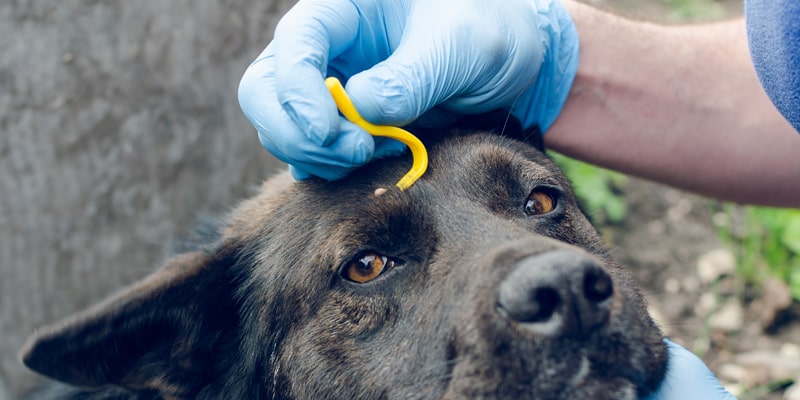Prevention of Lyme Disease In Humans And Dogs

Lyme disease – a vector-borne illness is spreading its tentacles in almost all the regions of the United States with 300,000 cases being reported every year. Studies reveal that majority of the outbreak is observed in the north-east, mid-west and Mid-Atlantic States which supposedly have had a high incidence of Lyme disease in the history.
According to the reports published by the Centers for Disease Control and Prevention (CDC), this vector-borne illness caused by Borrelia burgdorferi is responsible for 96% of cases from 13 states alone. Statistics also conform to these revelations making Pennsylvania and New-Jersey the highest affected states of the country followed by Vermont and Maine in the third and fourth position respectively. The disease is said to spread to the farthest regions like Mexico and Canada as well with the steady increase in the Lyme disease cases throughout the country. It is in fact incessantly spreading its reach in almost all 50 states of America with dogs and people affected equally with the endemic.
Lyme Disease in Humans
Lyme disease is a zoonotic illness which means it can be transmitted to the humans as well. But, in no way can an infected dog transmit the disease to its owner. A human gets Lyme disease only when it is bitten by a black-legged, deer tick and the critter stays attached to the skin for at least 24-48 hours. If the tick is removed within this time period, it is less likely that you will contract the disease. Lyme disease manifests itself in the form of fever, swollen lymph nodes, chills, severe headache, joint pain, irregular heartbeat and a rash in the bitten area and the person may also experience shooting pain in his hand or feet.
Lyme Disease in Dogs
Lyme disease is primarily a dog disease which is transmitted by ticks in all the canines. So, when a black-legged species of the tick (deer tick) containing Borrelia burgdorferi, bites a dog, the bacteria is transferred to the critter. However, it still takes 24-48 hours to actually transmit the disease. Hence, removal of the tick within this timeframe can save the pet from contracting this dreadful disease. Symptoms of Lyme disease in dogs include fever, lethargy, lameness, the stiffness of joints and loss of appetite.
Prevention Of Lyme Disease
Lyme disease is persistently firming its roots in all of the United States and even though the disease can be cured by antibiotics, it is actually logical to save yourself and your pet from undergoing such pain than enduring it. So, here are some of the best ways to do that.
Prevention Of Lyme Disease In Humans
- Cover yourself up whenever you go out.
- Wear protective clothing when you go out in the woods or parks where ticks could be lurking.
- Remove the tick immediately if you find one attached to your skin
- Use insect repellent and tick sprays for proofing your household and yard from these parasites.
- Consult your doctor if you see any symptoms of the disease.
Prevention Of Lyme Disease In Dogs
- Make sure you inspect your dog after coming from the outdoors.
- Remove the tick with tweezers if you find one attached to your dog’s body.
- Keep him on flea and tick preventatives throughout the year.
- Mow your backyard and garden to keep the rodents away as they are carriers of ticks.
- Use a tick collar whenever you take your dog out for a walk.

David joined CanadaVetCare in 2013 as a product analyst and veterinary assistant. Being a passionate pet lover and keen animal health researcher, David had always found ways and solutions to help pet parents to improve their pets’ health. He is always happy to answer pet health-related queries and recommending pet parents for the right pet product for their furry companions.

